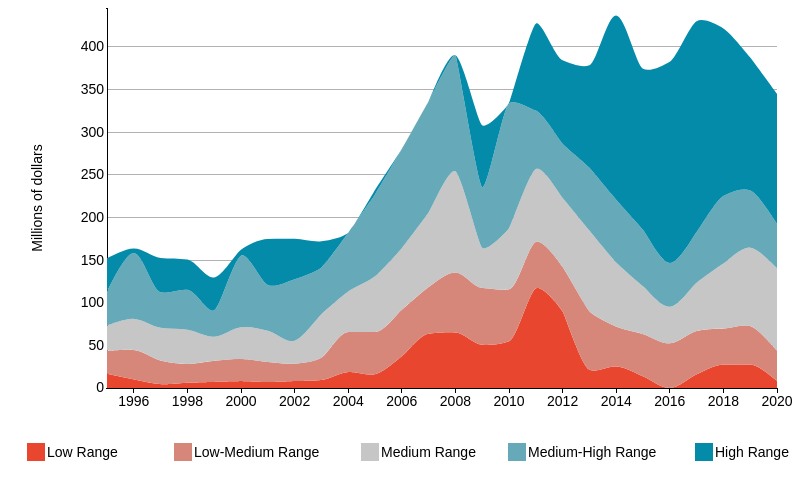Focusing vs diversification: a case study
The relevance of data in business decisions
Published by Pier Paolo Galbusera. .
Bestpractice Internationalisation Internationalisation toolsThe case presented in this short article illustrates how strategic business decisions must always be data-driven, even in the case of an SME, and how focusing on a few priority markets can be a winning strategy.
A case study
The case examined is about a company that builds machines for processing liquid foodstuffs - with a focus on the wine sector - and that wanted to understand which were the most important markets.
World demand for this product developed in terms of levels during the first decade of this century and in terms of quality during the second. It went from about $150 billion in the early years of this century to more than $400 billion in recent years. Following the Great Recession of 2008, a sharp increase in the quality of the products demanded by international markets (with the high and medium-high price brackets accounting for more than 50% of the total market) was added to the development in levels. These are particularly favourable conditions for the internationalisation of an Italian SME as product quality is one of its major strengths.
Equipment for filtering beverages: world trade by price range

The company is small in size but is present in many markets: from the United States to South America, from Europe to South Africa and the Far East. If, on the one hand, this is an indication of commercial dynamism and product quality, on the other hand it also hides a lack of focus on the so-called priority markets. In other words, there is a risk of dispersing commercial and marketing efforts/investments and not being strong on the most important markets.
The data and the tool used
The Export Planning platform, through the module Market Selection., was used to review the commercial strategies. The analysis started, as always, with the identification of the customs code. Unfortunately, the customs code of interest (UL842122: Apparatus for filtering or purifying beverages) includes not only wine products, but also products in the food sector. We have overcome this obstacle by supplementing the imports of the code concerned with other indicators:
- imports of oenological machinery, able to provide a measure of the size of the wine sector in different countries and its propensity to invest;
- wine production, also able to provide a measure of the size of the wine sector.
The combination of the different indicators give us a clearer snapshot of the target markets.
Target markets
The analysis of imports of filtering equipment, wine-making machines and wine production allowed us to define the 6 target markets for the company and, consequently, a series of more targeted sales and marketing actions (trade fairs, trips, translations of technical sheets, etc.). We then analyzed the company's presence in these markets and assessed the coverage of distributors and agents in all the wine-growing areas of the target markets. When we talk about markets such as France or Spain, for example, it is important to have coverage of all wine-growing areas. If the coverage was not adequate, we defined actions to achieve greater coverage in the short term. Of course, we were able to be so accurate because the markets we were interested in were only 6.
Conclusions
The conclusion of this study is that SMEs often get caught up in selling to distant and trending countries and lose sight of closer countries with high potential. Countries where there is certainly a lot of competition, but also a larger demand. Despite this hypercompetition, if a company has sufficient strengths and leading products, it can certainly carve out its own market space. Perhaps by reformulating its value proposition more clearly, and, above all, by adapting it to the specific characteristics of each market. The starting point is the selection of a priority market number on which to focus company's attention and commercial actions.


